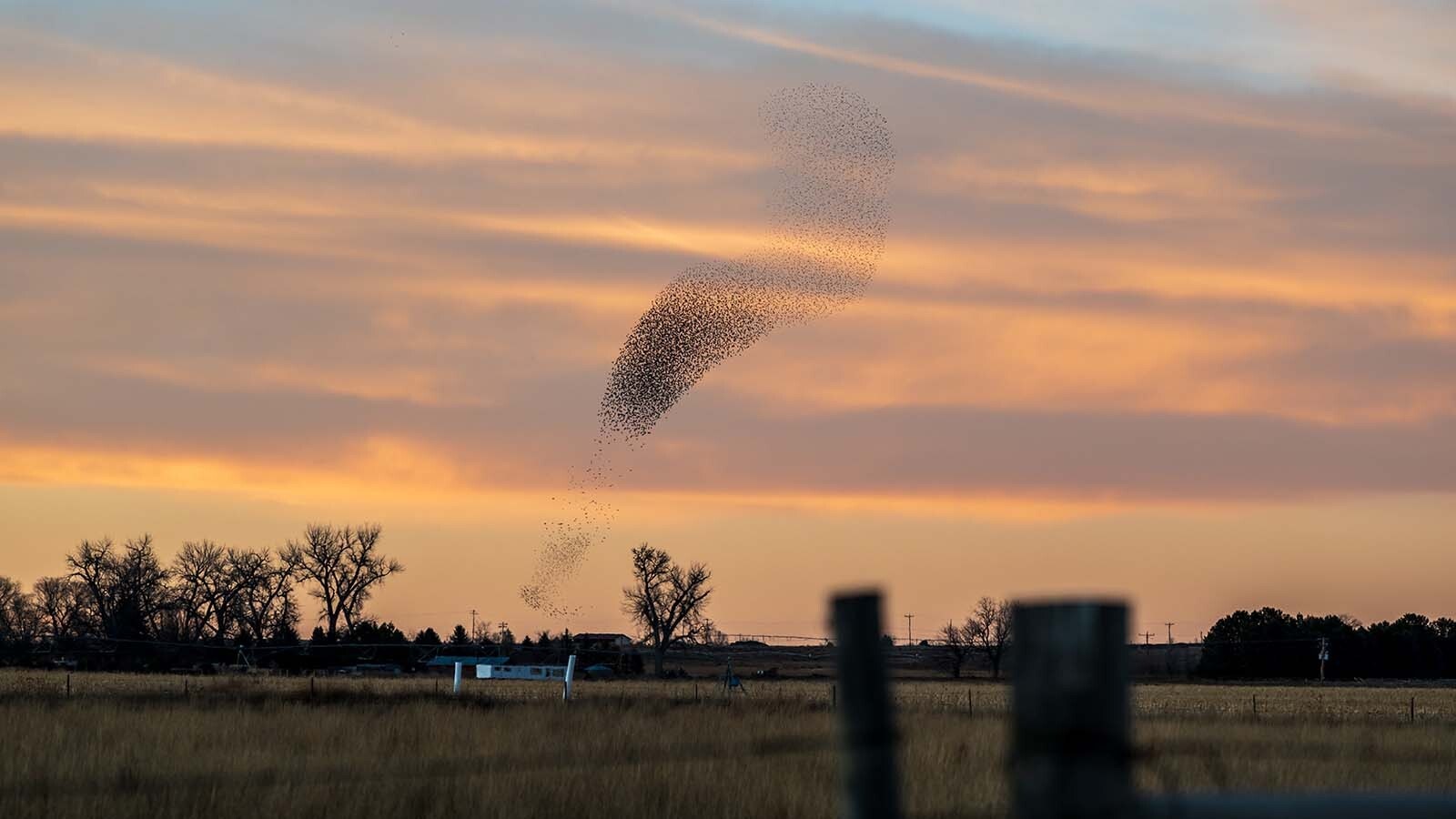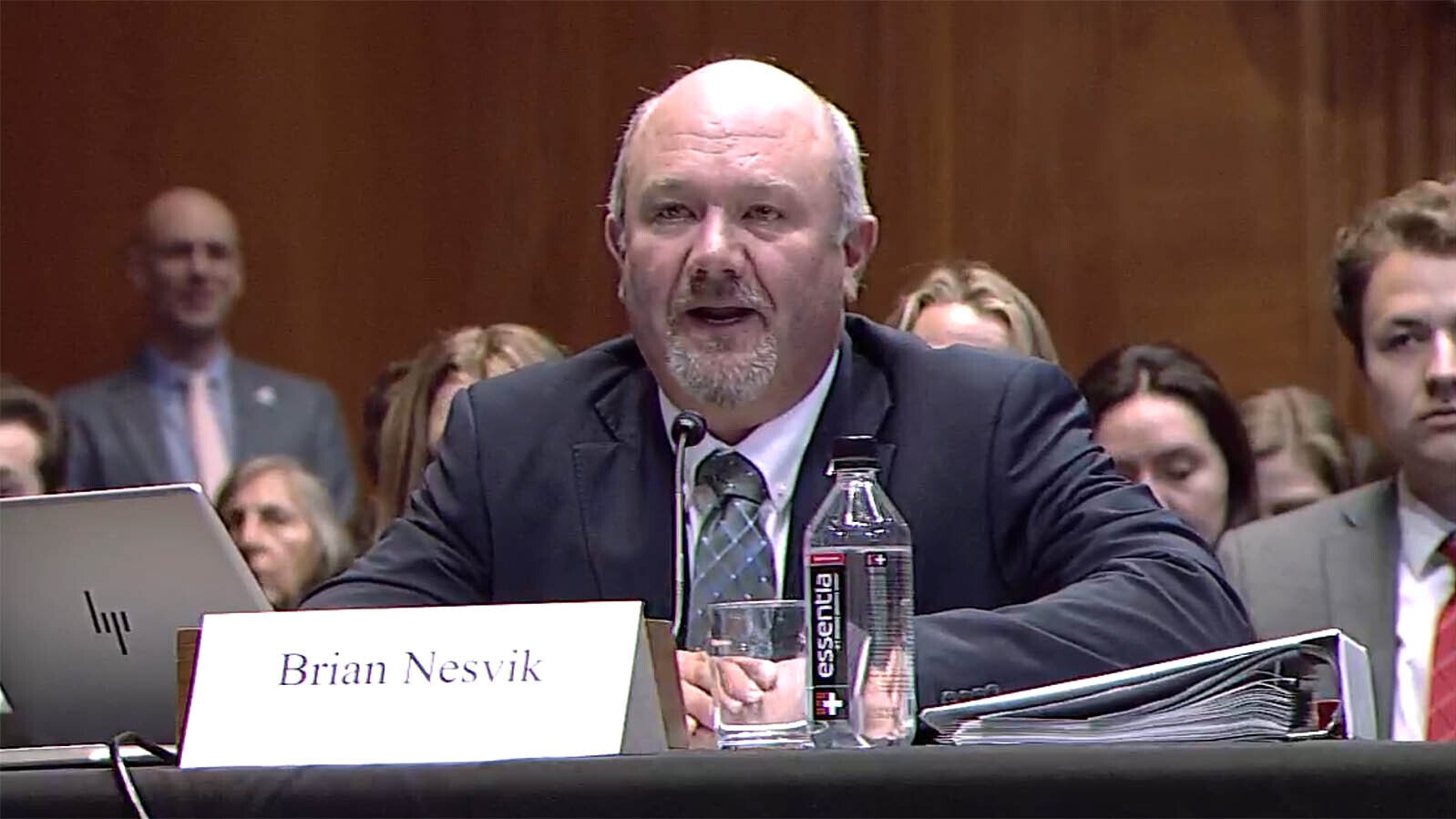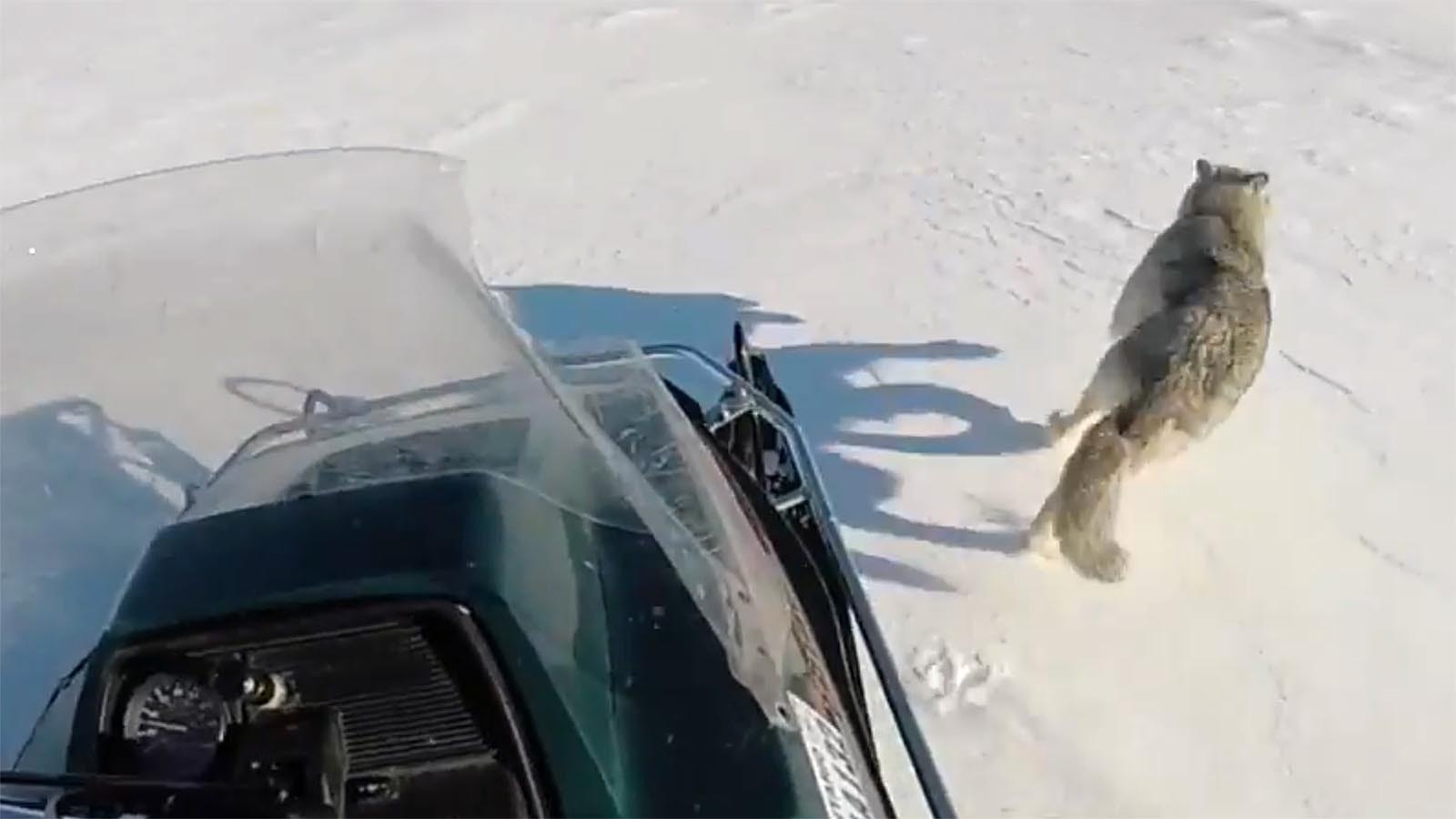CARPENTER — A target-resetting crew of four local girls waited inside their thick concrete downrange bunker at the Smithmoor Range near Carpenter as an alert came over the two-way radio.
“Range is going hot,” calls out a voice.
Seconds later came thunderous cracks of historically authentic black powder cartridge rifles, and the zipping of heavy cast-lead bullets aimed toward iron targets painted black and shaped like various animal silhouettes.
Some of the bullets struck the dirt berm backstop with dull thuds as they missed a set of pig silhouettes that were set up a safe distance off to the right of the bunker.
Others struck home with loud, satisfying rings and sent the iron pigs tumbling to the ground.
After a “cease fire” was called on the range, the order to re-set targets came over the two-way radio. The girls scrambled out of the bunker to go set targets back up for another round.
It was overcast and cool, but not cold on Thursday, with a gentle breeze coming across the Great Plains southeast of Cheyenne. That was great weather for competitors who came from several states to see who would walk away with the Smithmoor Cup after four days of competition.
A Family Affair
Competitive matches at the range have brought new life to the Smith farm, which sits just outside of Carpenter, a once-thriving agricultural center that has since gone quiet.
During the farm crisis of the 1980s, the Smiths nearly lost the land, patriarch Gary Smith told Cowboy State Daily. But his family did everything they could to hold on to their property.
He and his wife, Lorraine, both took additional jobs off the farm. As soon as their sons, Cody and Casey, were old enough, they pitched in too.
The Smiths started building the rifle range on their property in 2014 and gradually improved it, adding more targets. It now stretches all the way out to nearly 550 yards, challenging shooters to take a crack at knocking down ram silhouettes.
Casey now works as a lineman in South Dakota. Cody and his wife, Coralee, run the shooting matches.
‘Asking The Good Lord For Guidance’
As the morning wore on Thursday, the crack of the rifles and the chatter of competitors were music to Gary’s ears, confirming that his family’s legacy will endure on the land they’ve worked for generations.
And it’s gratifying to provide a premier venue for the tight-knit community of black powder cartridge fanatics, he said.
“That’s what brings us joy You can see these guys are having fun,” he said as he and Lorraine finished making lunch for the competitors.
To supplement their income during the hard times, the Smiths launched “Road Kill Catering,” which provided food at events in Laramie County and the surrounding area, Lorraine said.
The meals they provide for the shooting matches are an extension of that, she said.
“Now, instead of catering out in the community, we’re catering right here at the range,” she said. “The quality and the caliber of people we’ve been able to meet through hosting the matches has been amazing.”
Gary said his family succeeded in giving the farm new life by following the same values passed to him by his father and grandfather.
“It was the work ethic, the persistence, and asking the Good Lord for guidance,” he said.
The range is private, hosting monthly matches May through October, and the national competition for the Smithmoor Cup in early August.
Historically Accurate
Black powder cartridge rifle (BPCR) shooting is challenging, and addictive, Cody Smith told Cowboy State daily as he took a break from monitoring the range.
“Any factor you have to consider in rifle shooting is going to be that much more intense with black powder cartridge,” he said.
The rifles, sights (iron peep sights or scopes) and ammunition are authentic to the golden age of breach-loading, single-shot black powder cartridge rifles. That was from the end of the Civil war until the 1890s.
At the Smithmoor BPCR range, shooters are allowed to use only authentic cast lead bullets. And most of them cast their own bullets and hand-load their own cartridges, Cody Smith said.
Competitor Thomas Moore of Buffalo said finding just the right amount of powder with which to load the cartridges is painstaking. The powder charge is held in place behind a cardboard stopper that sits just behind the bullet, which have lubricated grooves near the base.
Black Powder Not Like Modern Gunpowder
Black powder pre-dates modern smokeless gunpowder. It was used for centuries in such weapons as the muskets in the Revolutionary War and the muzzleloading Hawken rifles carried by mountain men.
Cartridge rifles were the final iteration of black powder firearms. They ruled on the frontier until the switch to smokeless powder and some of the modern rifle cartridges that remain familiar to this day such as the .30-06 Springfield.
Black Powder doesn’t generate as much explosive pressure as modern smokeless powder. And the bullets used are typically much heavier than those in modern rifles.
The bullets lose energy and start to drop in their trajectory sooner than modern rifle bullets, and that makes long-distance shooting with black powder cartridge all the more difficult, Moore said.
Black powder is also messier than modern gunpowder. During matches, shooters clean their rifle barrels after each shot. Some run cleaning patches through. Others insert a blow tube into the rifles breach and blow the fouling out.
“It’s a big advantage, having a clean barrel for every shot,” he said.
At one time, black powder cartridge breach-loaders were made by several companies, including Remington and Sharps, competitor Dick Hennebry of Cheyenne told Cowboy State Daily.
In their heyday the rifles were frequently used to take down bison, he said.
“Those were all the old buffalo rifles. They were used to decimate the buffalo herds in the 1880s,” she said.

The Time An American Stole The Irish Thunder
Cody Smith said he was drawn to black powder cartridge shooting “because I love the Old West, I love the history of it.”
The Smithmoor range name is rooted in history, he said.
By the 1870s cartridge rifles had taken off. They’d largely replaced the old muzzle-loaders and there were shooting matches all over the world.
But despite their reputation for loving firearms, American shooters weren’t the top dogs in those contests, Smith said. The Irish were dominating the field.
Contests were huge events, often drawing 10,000 or more spectators, he said. And reporters would give remote shooting fans real-time updates via telegraph.
“Black powder cartridge shooting was the first sport to have play-by-play commentary,” Smith said.
Making a play for the big leagues, and hoping to finally beat the Irish, some Americans built a huge competitive rifle range on farmland owned by the Creed family in New York state, he said.
“Back then, ‘moor’ was a common term for a meadow. So the range was named the ‘Creeds’ Moor, and that was later shortened to ‘Creedmoor,’” Smith said.
That name became attached to a range of modern rifle cartridges, including the much loved and hated 6.5 Creedmoor.
“The range name ‘Smithmoor’ is a play off the legendary Creedmoor range,” Smith said.
The American-Irish rivalry came to head during an 1874 match at the Creedmoor range, he said. Rifle teams from each country had been assembled and shot their way to an essential tie.
Everything came down to a final 1,000-yard shot, and American rifleman John Bodine was up.
“He got in position to make the shot, but then found he was too nervous, so he went to get sarsaparilla soda to calm down,” Smith said. “Somehow, he cut his hand on the bottle and had to wrap his hand in cloth to stop the bleeding.
“With thousands of people watching, and all these reporters sitting at their telegraphs, ready to tell the whole world, he was there, with his hand wrapped in a cloth, preparing to make the shot. He finally squeezed off the shot, made a perfect hit, and that clinched the win for the Americans.”
Contact Mark Heinz at mark@cowboystatedaily.com
Mark Heinz can be reached at mark@cowboystatedaily.com.















